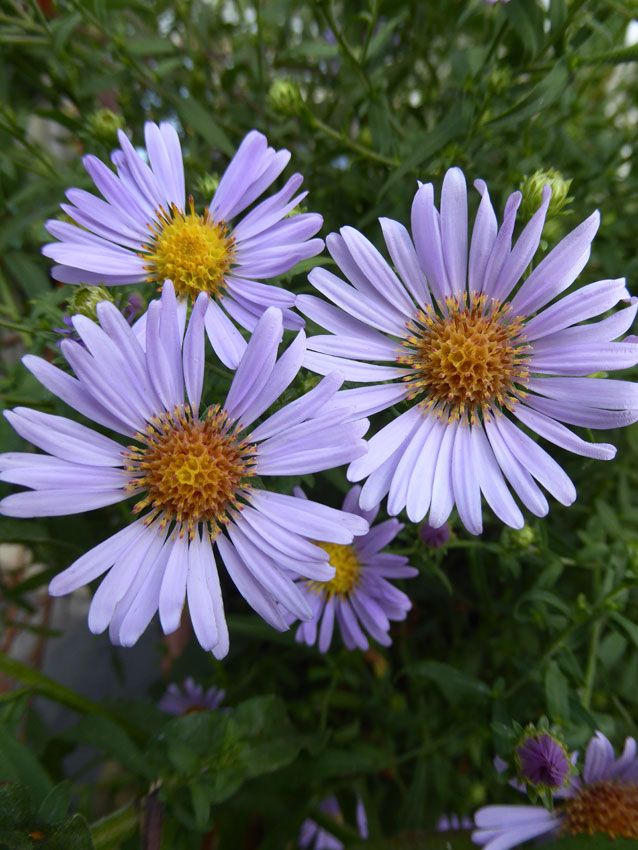Symphyotrichum chilense: Unveiling the Beauty of California Aster

Symphyotrichum chilense, commonly known as California aster, is a stunning perennial wildflower native to the western United States.
With its profusion of daisy-like flowers and adaptability to various habitats, this species holds both ecological and cultural significance.
In this comprehensive article, we will explore the botanical intricacies, habitat preferences, life cycle, ecological importance, conservation status, and care guidelines for Symphyotrichum chilense.
Botanical Description
Symphyotrichum chilense is characterized by its erect stems, lance-shaped leaves, and clusters of vibrant purple or blue flowers.
The flowers have yellow centers and daisy-like petals that radiate outward. California aster typically grows to a height of 1 to 3 feet (30 to 90 cm) and forms dense clumps or patches in its native habitat.
The foliage is typically dark green and may have a slightly rough texture.
Flowering occurs from late summer to fall, with the peak bloom period lasting several weeks.
Habitat and Distribution
California aster is native to a variety of habitats, including grasslands, meadows, coastal scrub, and open woodlands, throughout California and parts of Oregon and Nevada.
It thrives in well-drained soils and full sun but can also tolerate partial shade and a range of soil types.
Symphyotrichum chilense is often found in disturbed areas, along roadsides, and in urban open spaces, where it adds color and biodiversity to the landscape.
Life Cycle and Phenology
As a perennial plant, Symphyotrichum chilense undergoes a yearly life cycle marked by seasonal growth and flowering.
New growth emerges in spring, with the plant reaching full maturity by midsummer. Flowering typically occurs from late summer to fall, coinciding with the onset of cooler temperatures.
California aster is highly attractive to pollinators, including bees, butterflies, and other insects, which feed on the nectar and pollen-rich flowers.
After flowering, the plant may produce fluffy seedheads that disperse in the wind, contributing to its reproductive success.
Ecological and Cultural Importance
California aster plays a vital ecological role as a pollinator plant, providing nectar and habitat for a variety of insect species.
The flowers attract bees, butterflies, and other pollinators, contributing to the health and diversity of local ecosystems.
Additionally, Symphyotrichum chilense has cultural significance as a native wildflower, celebrated for its beauty and resilience in garden settings.
It is often used in native plant landscaping, wildlife gardens, and habitat restoration projects, where it adds color, texture, and ecological value.

Caring for Symphyotrichum chilense
Sunlight
Plant California aster in a location that receives full sun for at least 6 to 8 hours per day.
While it can tolerate some shade, full sun encourages the best growth and flowering.
Watering
Provide regular water during the establishment period, then gradually reduce watering once the plant is established.
California aster is drought-tolerant once established and only requires occasional watering during periods of extended drought.
Soil
Plant in well-drained, sandy or loamy soil with a neutral to slightly acidic pH.
Amend heavy clay or compacted soil with organic matter such as compost to improve drainage and fertility.
Mulching
Apply a layer of organic mulch around the base of the plant to conserve moisture and suppress weed growth.
Keep the mulch several inches away from the stems to prevent rot.
Pruning
Deadhead spent flowers regularly to encourage continuous blooming throughout the growing season.
In late fall or early spring, cut back the stems to promote new growth and maintain a compact shape.
By following these care guidelines, you can cultivate healthy and vibrant Symphyotrichum chilense plants in your garden or landscape, enhancing the beauty and biodiversity of your outdoor space while providing essential habitat for pollinators and native wildlife.
Whether used as a border accent, mass planting, or focal point in a wildflower garden, California aster is sure to captivate with its stunning blooms and ecological value.
Leave a Reply
You must be logged in to post a comment.